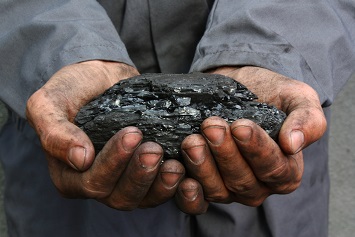The Department of the Interior’s (DOI) Bureau of Land Management (BLM) has released a scoping report that is the first step in a process that will produce a Programmatic Environmental Impact Statement (PEIS) in 2019 on the management of coal leasing on public land, says the BLM. The intent of the report is to present options to improve the federal coal-leasing program in four areas: (1) fair-mark-value (FMV) return to the public; (2) accounting for and reducing greenhouse gas (GHG) emissions; (3) improving resource management and protection; and (4) increasing the efficiency of the leasing process.
 |
Current Program
The BLM currently administers 306 coal leases encompassing over 475,000 acres in 10 states, with an estimated 7.4 billion tons of recoverable coal. Over the last decade, BLM-administered leases have produced over 4 billion tons of coal, resulting in the collection of over $10 billion in federal revenue that is shared with the state from which the mineral was mined. The recoverable coal currently under lease is estimated to be enough to continue production at current levels for approximately 20 years. In 2015, 42 percent of all coal produced in the United States came from publicly owned land, primarily in the Powder River Basin in Wyoming.
Yet, the BLM notes that the federal coal program last received a comprehensive review in the mid-1980s, and most existing regulations were promulgated in the late 1970s and have been only slightly modified since then.
“While energy markets, communities, environmental conditions, and national priorities have changed dramatically, the program has remained fairly static in its administration over the last thirty years,” says the BLM.
Following its announcement in the spring of 2016 that a PEIS was planned, the BLM said it held six public meetings in all regions of the country, which were attended by 2,000 people. Also, about 214,000 public comments (654 unique) were received, along with expert reports.
Possible Approaches
The report sets out three “possible option combination packages” plus “no action” and “no leasing” alternatives that would be fully explored in a draft PEIS and, potentially, a final PEIS. The following examples are from Option 1:
- FMV. The BLM would identify the most appropriate metric and corresponding royalty rate for federal coal, reflecting analyses already conducted by other groups such as the Council of Economic Advisers.
- Climate change and resource protection. The BLM would require lessees to carry out or fund activities that proportionally offset climate-related impacts, including through investment in a fund managed by an entity that takes on the liability to proportionally offset those GHG emissions and climate-related impacts. Contribution to the fund would be tied to the units of coal produced. Funds could be used for activities that include, but are not limited to, carbon offsets, carbon sequestration, climate adaptation, and community resilience.
- Leasing process. Strategic leasing plans would be developed on the basis of regular reviews of projected domestic coal demand (e.g., over a 5-year window) and the role of federal coal resources in meeting domestic energy needs. All interested companies would bid among themselves for the right to produce a specified quantity of coal in the location of their choice, assuming it is suitable for mining and consistent with the approved land-use plan and strategic leasing plan.
DOI Secretary Nominee
The scoping report and any further plans for a PEIS will fall into the hands of President-elect Donald Trump’s new secretary of the interior. Trump has nominated Rep. Ryan Zinke (R-MT) for the job. Zinke has differed with Republican colleagues by taking an adamant stand against selling public land to private interests. He has also criticized actions by the DOI that increase royalty rates for coal, oil, and gas production on public and tribal lands. In addition, he has supported legislation to extend the Indian Coal Production Tax Credit (ICPTC). Sponsors say the ICPTC provides tribes “much-needed certainty to invest in large-scale energy production projects and provides a path forward for the long-term prosperity of our tribal nations.”
BLM’s scoping report is here.
